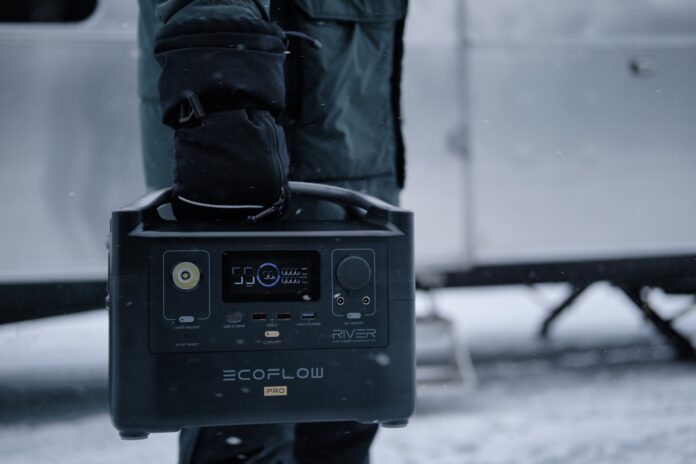Table of Contents
Spring and fall are any angler’s favorite seasons. Fish are out and active, feeding and mating, increasing chances for a successful day on the water. It’s a peaceful hobby offering relaxation and bonding with friends or family. As the seasons change to winter, many anglers pack up their equipment, turning to other pastimes in the cold weather.
However, this sport doesn’t have to end as the cool breeze settles in. Keep reading to learn if fishing during the winter is a good idea, which fish to look for, and what the best fishing practices are.
Is It Good To Go Fishing When It’s Cold?
Late spring, summer, and fall are the best time for anglers. However, fish don’t leave lakes in the winter, so it’s still possible to catch them during cold months.
What Temperature Do Fish Bite the Best?
- Snappers 72-80°F
- Trout 55-60°F
- Blue catfish 70-80°F
- Largemouth Bass 60-80°F
- Northern Pike 55-65°F
- Walleye 45-55°F
- Perch 45-55°F
- Crappie 55-75°F.
- Bluegill 65-80°F
Which Fish Bite Best in Cold Weather?
Cold weather can be ideal for catching certain fish species as some remain active and continue to feed even as the water temperature drops. Even if a colder temperature isn’t optimal for your desired catch, you can adapt your technique to increase your chances. In freshwater, Walleye bite well in temperatures as low as 35°F and crappies as low as 37°F. If you’re fishing in saltwater, look for winter flounder. Find them between 34-50°F. While near the coast, striped bass are active around 45-55°F.
Northern Pike, Yellow Perch, and Bluegill are popular for ice fishing. Ice fishing involves cutting holes into the ice on frozen water and then dropping baited line directly in. While out on the frozen water, set up an insulated shelter to stay warm. Find the best solar generator to bring for reliable electrical power and keep devices and space heaters running while waiting on the fish with the EcoFlow RIVER 2 Max + 160W Solar Panel.
5 Cold Weather Fishing Tips
Start At Midday Instead
Some anglers say the early morning and late afternoon is always the best time of day. However, others claim to have more luck in the middle of the day when it’s winter. When the sun is at its highest point, fish move around more.
Stick to fishing between 10 am and 4 pm, the opposite of summertime fishing, when you should cast outlines during cooler parts of the day. A winter midday is safer and easier to stay warm in.
Adapt To Slower Movement
Expect fish to move slower in the winter. You’ll want to have careful control of the lure’s movement. Utilize a lighter line for gentler presentation in the water. With a slower metabolism, fish don’t want to chase fast-moving bait.
Keep Yourself Comfortable
Before heading out on the boat, prepare yourself for cold, harsh weather. Dress in multiple layers. Keep your head, hands, feet, and face warm with covers and gloves. Bring a portable power station like the EcoFlow RIVER 3 to charge your phone and other small devices during the trip. Upscale to the EcoFlow RIVER 2 Pro + 220W Solar Panel if you need more power for weekend trips.
This portable power station and solar panel duo provide 768Wh storage capacity and can recharge in under two hours. Calculate what size solar generator you need to power all the fishing electronics on the trip.
Change Location
Your favorite fishing location may not be available in the winter, as lakes may be drained or fish have migrated. Fish migrate towards deeper, warmer pockets of water in a lake. You may need fishing devices, like sonar detectors, to help track them down. When Ice fishing, some species prefer shallower parts of the lake, closer to the sunlight.
Change your Bait
Not only should your line movement be gentle and controlled, but your bait choice should also be adapted. Live bait is best. Lures move too fast, so it’s challenging to maintain movements to entice lazy fish. If you prefer lure, make sure they have feathers or extra frills to mimic live bait. Artificial bait is another alternative.
Stick to smaller sizes. Fish are after a bait that is two to three inches in length. It’s easier for them to catch it with their slower metabolism than larger prey. Keep live bait cold or your personal food and drinks cold with the EcoFlow Glacier Portable Refrigerator. It holds up to 38L, with plenty of room for a day on the water. There are plenty of ways to utilize this fridge outside of fishing as well.
Frequently Asked Questions
Typically, 32°F is too cold. At this temperature, water freezes, and fish cannot swim through solid ice. However, in deep rivers and lakes, the water beneath the layer of ice is warm enough for them. The water is normally 35-39°F, a perfect opportunity for ice fishing.
Final Thoughts
Don’t stow away your fishing supplies just because the temperatures have dropped. Winter is a great time to hone in on species that thrive in colder waters. Look for Walleye, Crappie, winter flounder, and striped bass. You’ll need to adapt the routine for the best chance to catch them. Start during the warmest part of the day, keep line movement gentle and slow, evaluate locations, and change to smaller bait.
Stay safe and warm on a boat or ice fishing with the EcoFlow RIVER 2 Max + 160W Solar Panel. Charge your cell phone, fishing equipment, and a small heater for a successful day of angling.
